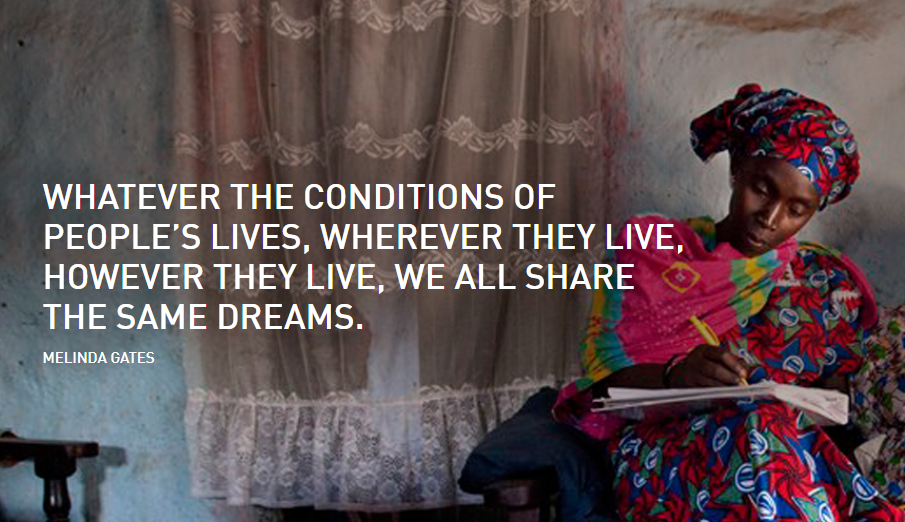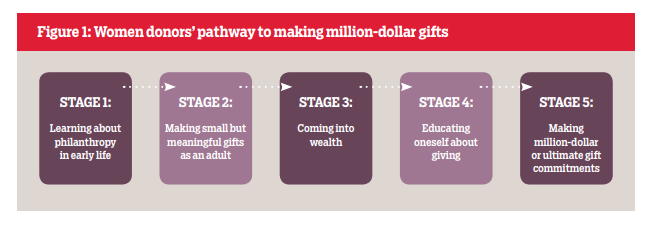THE RISE OF THE FEMALE PHILANTHROPIST — DO HIGH NET WORTH FEMALE PHILANTHROPISTS GIVE DIFFERENTLY THAN OTHER FEMALE DONORS?
THE RISE OF THE FEMALE PHILANTHROPIST —
DO HIGH NET WORTH FEMALE PHILANTHROPISTS GIVE DIFFERENTLY THAN OTHER FEMALE DONORS?
Andrea McManus, ViTreo Group Inc
December 11th 2018
As we see (a turtle-like) change in the status of women globally in terms of wealth and influence, combined with the increased access to information provided by the internet, we are more aware than ever of the recent significant gifts being made by female philanthropy, singly or in collaboration with their partners. Women have always given of their money and their time — but as fortunes for some of them increase, do they donate to different causes or use alternate methods than their less affluent sisters?
Some research shows there may be differences - and that makes sense. As F. Scott Fitzgerald is reported (there are varying reports of this conversation) to have said to his friend, Ernest Hemingway, “The rich are different from you and me.” And Hemingway’s response was, “Yes. They’ve got more money.” And I believe most of us would agree that immensely wealthy women — such as Melinda Gates, Susan Buffett, Patricia Harris, Priscilla Chan and more — don’t view the world in the same way you or I would. And that makes a difference in how they exert their philanthropic dollars and time (Inside Philanthropy - Meet the 15 Most Powerful Women in U.S. Philanthropy).
One example is this significant 2018 donation. “On the eve of International Women's Day, the Bill and Melinda Gates Foundation has announced a USD 170 million project aimed at advancing women's economic empowerment in four countries, including in India. ….Announced yesterday, the investments focused in India, Kenya, Tanzania and Uganda will target four key priorities - advancing gender equality, spreading digital financial inclusion, increasing job opportunities, and supporting the agricultural sector and women's support groups.”
The investments will not only help better understand what works to ensure women are able to fully participate in economies, but also dismantle the barriers that have held women back for far too long, said Sarah Hendriks, director, gender equality at the Bill & Melinda Gates Foundation.
"Our strategy is aimed at giving more women and girls the economic opportunities they need to engage as equals in society," Hendriks said. Read more at: The Economic Times
Source: Giving By And For Women Report
Andrea Pactor, Interim Director at the Women’s Philanthropy Institute recently posted this: “Our latest Women’s Philanthropy Institute (WPI) report involved in-depth conversations with 23 powerful women about their experiences with philanthropy.
Philanthropy starts young. The majority of our participants did not grow up wealthy, but most had early experiences with philanthropy - and were "taught to give what they could." Many emphasized the role that parenting and religion played in demonstrating that one did not have to be wealthy to be helpful or philanthropic.
With great wealth comes great responsibility. Many of the participants who came into wealth later in life described a common sense of responsibility to share their financial resources with others. A significant and sometimes sudden shift into a new class position often led to a phase of self-reflection for our participants, who grappled with how to best handle their newfound wealth. One said: "My first step in coming to terms with my inheritance and working with it was through philanthropy."
Education is key. After coming into wealth, almost all participants engaged in a deep learning process to better understand the field of philanthropy and specific issues affecting women and girls. This type of learning is ongoing and comes in the form of conversations with other women donors, research, joining women's funding groups and boards, and more (like our studies!).
Bring on the risky business. Contrary to conventional wisdom that women tend to be more risk-averse with their finances, the participants we spoke with emphasized the importance of experimental philanthropy. They talked about their willingness to take risks, and fund projects that answer questions - rather than just known solutions. It’s also interesting to note that many participants started their own business or enterprise - an inherently risky endeavor.
It’s all about ROI. Participants give to women and girls because they know it's a smart investment. One described funding for women as a "nexus" for many other issues, including poverty, climate change and wealth inequality. Another said: “...It’s not that we only care about women and girls. We’re just seeing that women and girls are agents that will lift up their entire family and their entire community.”
Challenge the system. When giving to women and girls, many of the participants expressed a preference for investing in organizations focused on changing systems - such as law, public policy, culture - rather than direct service. One participant said: "I was really interested in funding organizations that went upstream and try to address the root of the problem."
Experience informs funding. When it comes to supporting women and girls, participants were motivated in part by their own gender-based experiences with discrimination, inequality, reproductive health and education. One said: "I have stayed in this field because I understand it." At a time when so many women are fired up to fight against persistent gender inequality, philanthropy gives us all the opportunity to be part of the solution.” WPI 7 Things We Learned
Research by the Lilly Family School of Philanthropy reveals that leaders of nonprofits launched by the women’s movements in the 1970’s and 80’s saw little funding being directed to the needs of women and girls. The women leading these organization created foundations to change this. “In the past 40 years, local, regional, national, and international women’s foundations were established with women’s empowerment at the core of their missions. Today, the Women’s Funding Network, the largest network of women’s funds, reports having 100 member funds in 20 countries. According to their estimates, in 2015, those funds granted more than $410 million to women’s and girls’ causes and organizations, making grants to further women’s economic security and reproductive health and justice, among other issues.” Giving by and For Women
As I’ve said in earlier blogs, we cannot view anyone — male or female — millennial or baby boomer, rich or not, with one lens. What has been your experience with high net worth donors?
In the September 2015 research study, Do Women Give More? Findings from Three Unique Sets of Data — The Indiana University Lilly Family School of Philanthropy, The Women’s Philanthropy Institute (WPI), and The Lilly Family School of Philanthropy Project Team — demonstrated there are additional factors to consider when cultivating and stewarding female donors:
“….that a one-size-fits-all fundraising model is obsolete. Profiles of individual donors with as much accompanying demographic information as possible are essential for fundraisers to achieve their goals. As single donors — especially women — become an increasingly larger part of donor databases, extra care, communications, and stewardship will create more loyal and generous donors.”
This study, has begun to untangle the relationship between income, gender, and charitable giving in married couples. In the past, fundraisers and researchers may have assumed that charitable giving would
“follow the money… However, before income is even earned, husbands and wives must decide who will work outside the home. The study finds that when both individuals earn income, charitable decision making is equally affected by the husband’s and the wife’s earned income….and when a husband provides the majority of the household income, it drives charitable giving. In contrast, when women significantly out-earn their husbands, charitable giving drops.”
“Women and men are not homogeneous groups. Much of the current research treats men and women as unified categories when looking at the effects of gender on giving. When we more closely examine the characteristics of each group, nuances appear that have not been previously studied. In this study, the use of multiple data sets, and the analysis of single-headed and married couple households by multiple demographic factors, contribute to a comprehensive picture of the changing American household and provide a more nuanced explanation of how and why men and women give differently. As a result, not only do we affirm results from previous studies, but we have also provided new findings that add to the current literature. We show that the effects of age, marriage, divorce, income, education, and employment all shape the preferences of individual men and women, as well as the ways they make decisions together as couples.”
If you work with high net worth individuals, what has your experience been? Do you approach them differently? What has worked, what hasn’t? Have you noticed a difference in how they give?
If you’re interested in learning more about how millennials are disrupting philanthropy, read our recent blog or listen to our podcast, Millenials are people, too.
ABOUT THE AUTHOR
Andrea McManus, Chair, Board of Directors, Partner
ViTreo Group Inc
Andrea McManus is a Partner with ViTreo with over 30 years’ experience in fund development, marketing, sponsorship and nonprofit management. A highly strategic thinker and change maker, Andrea has worked with organizations that span the nonprofit sector with particular focus on building long-term and sustainable capacity.









